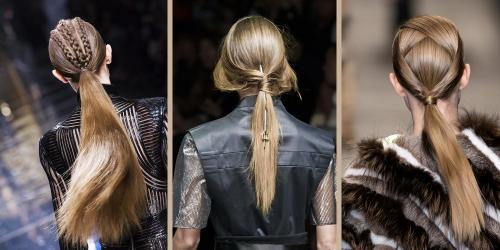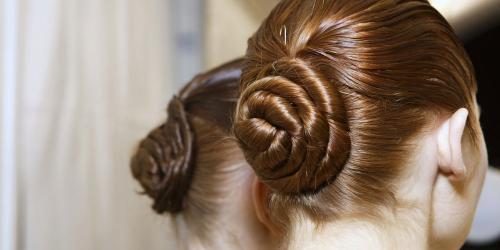How to twister the classic three-strand braid? By adopting the braid wheat ear of course!
Also called "fishtail" braid, this hairstyle, which gives us the appearance of a naiad in summer, makes its effect all year long.
To give it an even more worked side, we do not hesitate to accessorize it, with a headband, jewels or a pretty ribbon intertwined with the lengths.
The right tutorial to make a braid ear of wheat
To succeed our braid ears of wheat, here are the steps to follow:
- 1. One detangles
A brushstroke is needed to discipline our hair and separate our lengths more easily when styling. For a "wild" effect, you can apply a texturizing spray on the lengths.
- 2. We separate our lengths in two
The pigtail is built on a base of two strands - to understand wick - and no longer three strands. To keep the braid in place, you can slip a transparent elastic at the top of the ponytail - bass of course. Then we split into two parts.
- 3. Clear a little bit
In the back of one of the two strands that have been defined, a small wick is released, which is brought back over to bind it with the opposite strand.
- 4. Same on the other side
Once we have passed the small strand in the opposite wick, we reproduce the previous step. A little bit is pulled out at the back and brought back to the opposite side, and so on.
- 5. The braid is tight
For our braid on the cob is perfectly successful, we do not braid too loose. Better to stop regularly to tighten the knots and thus gain length to plait.
- 6. We fix the hairstyle
With the help of an elastic, we come to fix our braid. To hide the fastener, we can wrap around a lock of our hair and fix it with a small flat clip on which we will have sprayed a little dry shampoo for holding.
- 7. We draw some wicks for a more natural effect
For a less strict effect, we loosen our spiked braid pulling a few browns delicately outward. You can also brush lightly with a toothbrush to make it look bushy.
Finally, with a pair of scissors we just cut the transparent elastic at the beginning.
To help you memorize gestures, nothing like a good video tutorial. We have selected for you that of the blogger Lauren Conrad:




